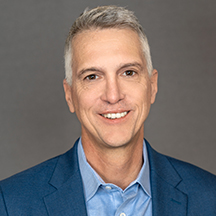Recently, at a professional learning event in Texas, I may have ruffled some feathers when I shared that scant evidence exists in scientific research for teachers posting learning objectives to improve student learning.
What?! How can that be when so many teachers are required to post learning objectives in their classrooms? Here’s the reality: learning objectives are necessary, but not sufficient to improve student outcomes. Without a doubt, teachers must be clear what they want students to learn. Yet until students translate learning objectives in their own goals for learning, learning objectives posted in front of the room are bit like a proverbial tree falling in the woods with no one around to hear it.
As it turns out, student goals are incredibly powerful. In The New Classroom Instruction that Works we identified 14 scientific studies conducted in classrooms with diverse learners that found powerful effects for students setting their own goals for learning.
Getting kids to take ownership of their learning is easier said than done, of course. In last month’s Changing Schools, I shared an important first step in the process: helping students to become interested in their learning—and shared a student interest inventory as a tool to cultivate students’ curiosity and engagement. Once students are interested in learning, a new challenge emerges: helping students commit to learning. As it turns out, decades of research on student motivation shows that before students commit to learning, they need to know see what they’re being asked to learn as a) achievable and b) meaningful.
Teachers can help students find meaning in their learning by providing students with what advertising executives call a WIIFM (i.e., what’s in it for me?). For example, what’s in it for students if they commit to learning science concepts, math formulas, or writing skills? How might they use this information or skills in the real world? Their own lives? Or to build toward later learning?
One way to give students a WIIFM is to add two words—“so that”—to our learning objectives and complete the sentence (i.e., “We will learn (blank), so that we can (blank).” For example: “We will learn how to calculate the area of a variety of four-sided polygons so that we can calculate the dimensions and size of our actual spaces in our world.”
Without a doubt, figuring out why we’re asking students to learn something is no small task. Yet if we don’t figure out why we’re asking students to learn something, we can be guaranteed students won’t figure it out either. But if we can take the time to help students set their own meaningful goals for learning, they are more likely to take ownership of their learning and feel a sense of true accomplishment when they achieve their goals. And that points to the real WIIFM for teachers to apply these sorts of best first instruction strategies in their classrooms—because it makes learning easier and more joyful for their students and themselves.
Related Resources:
• Free whitepaper: Unleashing the Power of Best First Instruction
• Blog: Going slow to go fast, with best first instruction
• Podcast: What’s New with The New Classroom Instruction That Works?
This post originally appeared in our September 2023 Changing Schools newsletter. Click here to sign up to receive McREL’s free monthly newsletter.


